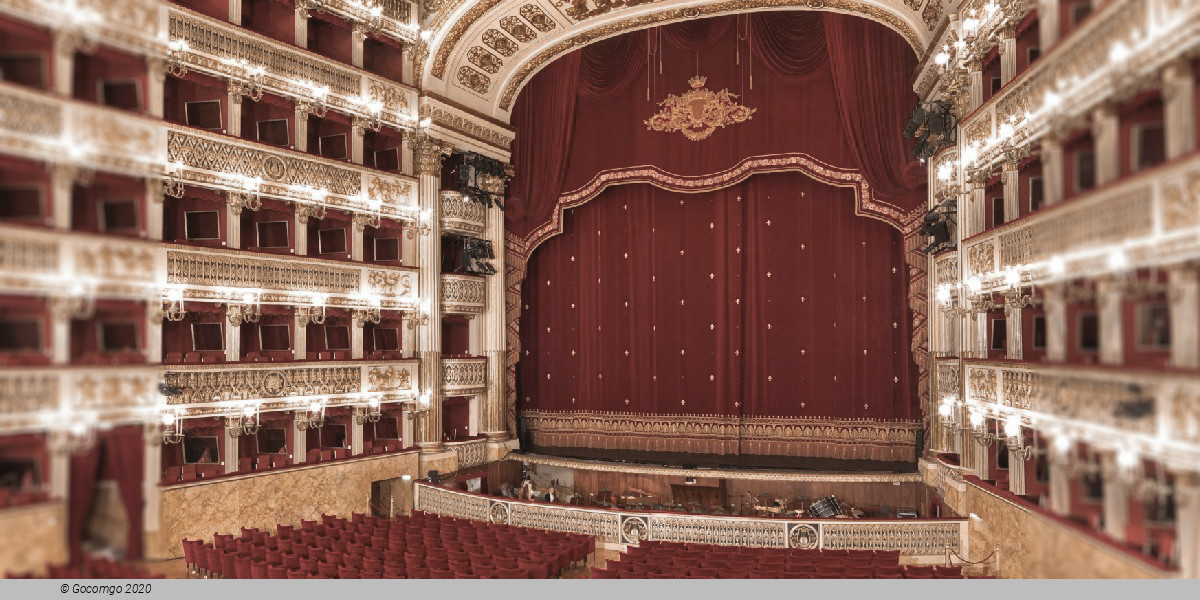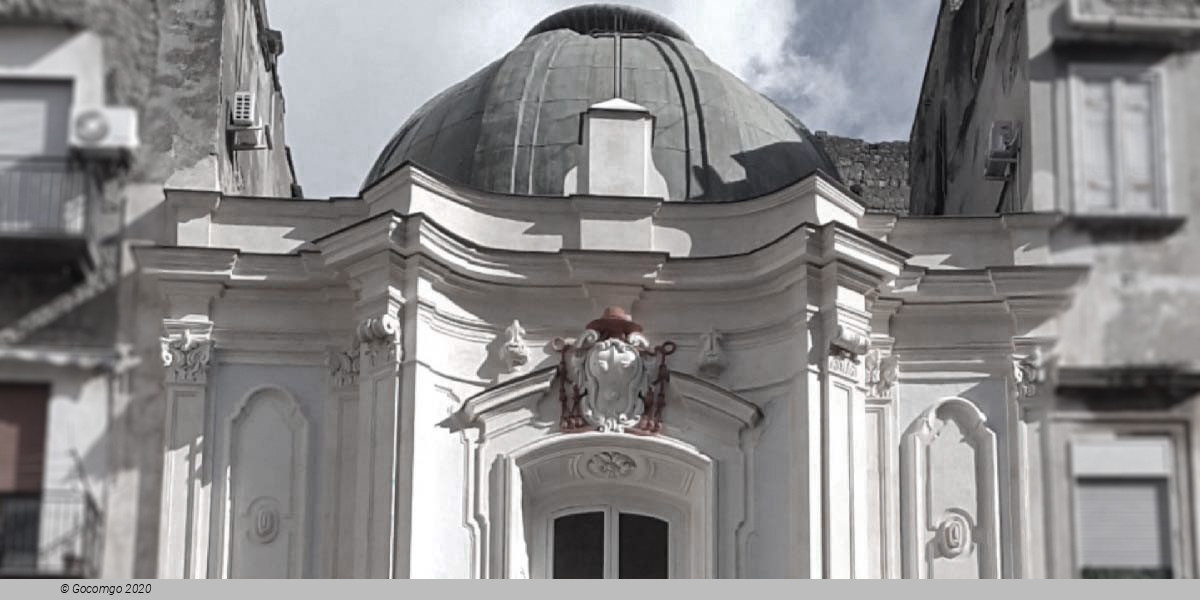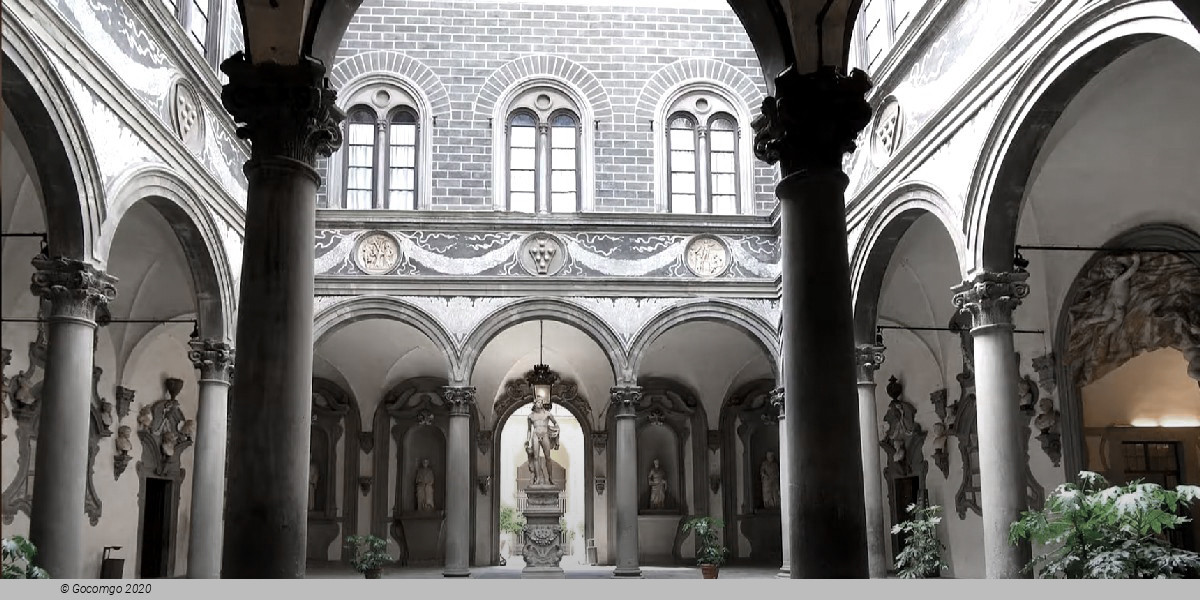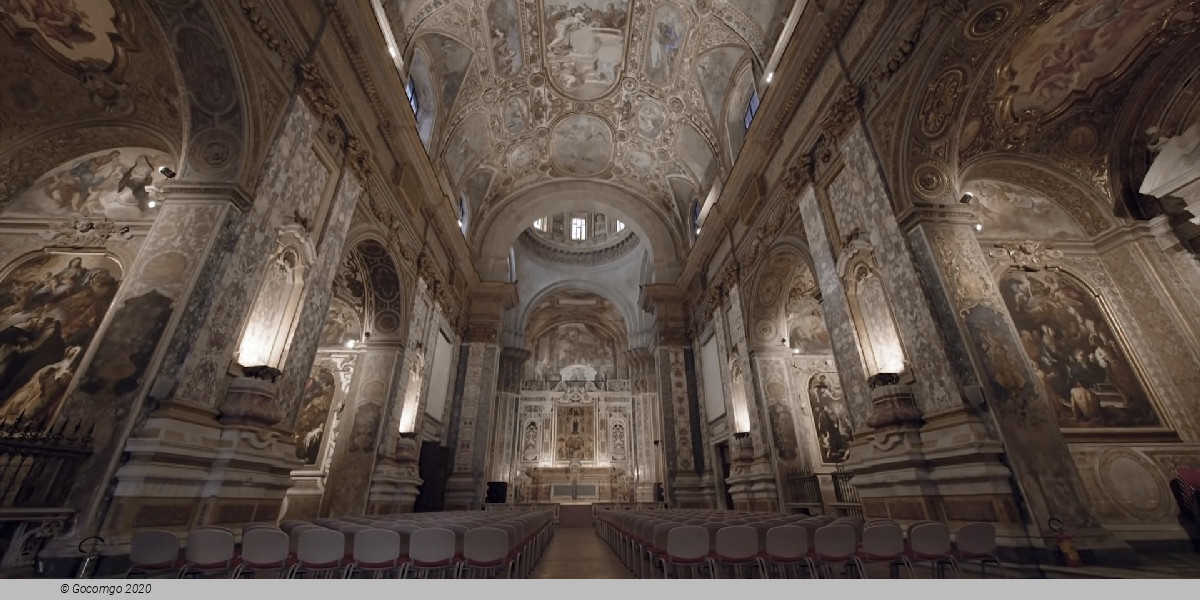Venues in Naples
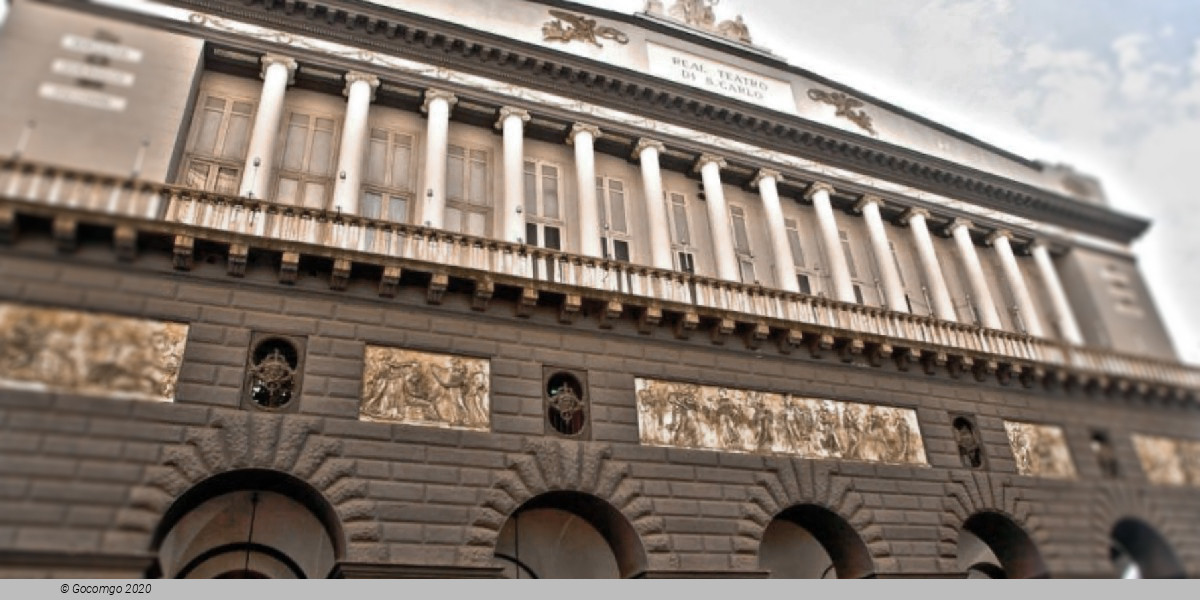
Naples is the regional capital of Campania and the third-largest city of Italy, after Rome and Milan, with a population of 967,069 within the city's administrative limits as of 2017. Its province-level municipality is the third-most populous metropolitan city in Italy with a population of 3,115,320 residents, and its metropolitan area (that stretches beyond the boundaries of the Metropolitan City of Naples) is the second-most populous metropolitan area in Italy and the 7th-most populous urban area in the European Union.
Naples has been inhabited since the Neolithic period. The earliest Greek settlements were established in the Naples area in the first millennium BC. Sailors from the Greek island of Rhodes established a small commercial port called Parthenope on the island of Megaride in the ninth century BC. By the eighth century BC, the settlement had expanded to include Monte Echia. In the sixth century BC, the city was refounded as Neápolis (Νεάπολις), eventually becoming one of the foremost cities of Magna Graecia.
The city grew rapidly due to the influence of the powerful Greek city-state of Syracuse and became an ally of the Roman Republic against Carthage. During the Samnite Wars, the city, now a bustling center of trade, was captured by the Samnites; however, the Romans soon captured the city from them and made it a Roman colony. During the Punic Wars, the strong walls surrounding Neápolis repelled the invading forces of the Carthaginian general Hannibal.
Naples was greatly respected by the Romans as a paragon of Hellenistic culture. During the Roman era, the people of Naples maintained their Greek language and customs, while the city was expanded with elegant Roman villas, aqueducts, and public baths. Landmarks such as the Temple of Dioscures were built, and many emperors chose to holiday in the city, including Claudius and Tiberius. Virgil, the author of Rome's national epic, the Aeneid, received part of his education in the city, and later resided in its environs.
It was during this period that Christianity first arrived in Naples; the apostles' Peter and Paul are said to have preached in the city. Januarius, who would become Naples' patron saint, was martyred there in the 4th century AD. The last emperor of the Western Roman Empire, Romulus Augustulus, was exiled to Naples by the Germanic king Odoacer in the 5th century AD.
Duchy of Naples
Following the decline of the Western Roman Empire, Naples was captured by the Ostrogoths, a Germanic people, and incorporated into the Ostrogothic Kingdom. However, Belisarius of the Byzantine Empire recaptured Naples in 536, after entering the city via an aqueduct.
In 543, during the Gothic Wars, Totila briefly took the city for the Ostrogoths, but the Byzantines seized control of the area following the Battle of Mons Lactarius on the slopes of Vesuvius. Naples was expected to keep in contact with the Exarchate of Ravenna, which was the center of Byzantine power on the Italian Peninsula.
After the exarchate fell, a Duchy of Naples was created. Although Naples' Greco-Roman culture endured, it eventually switched allegiance from Constantinople to Rome under Duke Stephen II, putting it under papal suzerainty by 763.
The years between 818 and 832 were tumultuous in regard to Naples' relations with the Byzantine Emperor, with numerous local pretenders feuding for possession of the ducal throne. Theoctistus was appointed without imperial approval; his appointment was later revoked and Theodore II took his place. However, the disgruntled general populace chased him from the city, and instead elected Stephen III, a man who minted coins with his own initials, rather than those of the Byzantine Emperor. Naples gained complete independence by the early ninth century. Naples allied with the Muslim Saracens in 836 and asked for their support to repel the siege of Lombard troops coming from the neighboring Duchy of Benevento. However, during the 850s, Muhammad I Abu 'l-Abbas led the Arab-Muslim conquest of the city and managed to sack it and take a huge amount of its wealth.
The duchy was under the direct control of the Lombards for a brief period, after the capture by Pandulf IV of the Principality of Capua, a long-term rival of Naples; however, this regime lasted only three years before the Greco-Roman-influenced dukes were reinstated. By the 11th century, Naples had begun to employ Norman mercenaries to battle their rivals; Duke Sergius IV hired Rainulf Drengot to wage war on Capua for him.
By 1137, the Normans had attained great influence in Italy, controlling previously independent principalities and duchies such as Capua, Benevento, Salerno, Amalfi, Sorrento, and Gaeta; it was in this year that Naples, the last independent duchy in the southern part of the peninsula, came under Norman control. The last ruling duke of the duchy, Sergius VII, was forced to surrender to Roger II, who had proclaimed himself King of Sicily seven years earlier. Naples thus joined the Kingdom of Sicily, with Palermo as the capital.
As part of the Kingdom of Sicily
After a period of Norman rule, in 1189 the Kingdom of Sicily was in a succession dispute between Tancred, King of Sicily of illegitimate birth, and the Hohenstaufens, a German royal house, as its Prince Henry had married Princess Constance the last legitimate heir to the Sicilian throne. In 1191 Henry invaded Sicily after being crowned as Henry VI, Holy Roman Emperor and many cities surrendered, but Naples resisted him from May to August under the leadership of Richard, Count of Acerra, Nicholas of Ajello, Aligerno Cottone, and Margaritus of Brindisi before the Germans suffered from disease and were forced to retreat. Conrad II, Duke of Bohemia, and Philip I, Archbishop of Cologne died of disease during the siege. In light of this Tancred achieved another unexpected achievement during his counterattack that his contender Constance, now empress, was captured. He had the empress imprisoned at Castel dell Ovo at Naples before her release on May 1192 under the pressure of Pope Celestine III. In 1194 Henry started his second campaign upon the death of Tancred, but this time Aligerno surrendered without resistance, and finally, Henry conquered Sicily, putting it under the rule of Hohenstaufens.
The University of Naples, the first university in Europe dedicated to training secular administrators, was founded by Frederick II, making Naples the intellectual center of the kingdom. The conflict between the Hohenstaufens and the Papacy led in 1266 to Pope Innocent IV crowning the Angevin duke Charles I King of Sicily: Charles officially moved the capital from Palermo to Naples, where he resided at the Castel Nuovo. Having a great interest in architecture, Charles I imported French architects and workmen and was personally involved in several building projects in the city. Many examples of Gothic architecture sprang up around Naples, including the Naples Cathedral, which remains the city's main church.
Kingdom of Naples
In 1282, after the Sicilian Vespers, the Kingdom of Sicily was divided into two. The Angevin Kingdom of Naples included the southern part of the Italian peninsula, while the island of Sicily became the Aragonese Kingdom of Sicily. Wars between the competing dynasties continued until the Peace of Caltabellotta in 1302, which saw Frederick III recognized as king of Sicily, while Charles II was recognized as king of Naples by Pope Boniface VIII. Despite the split, Naples grew in importance, attracting Pisan and Genoese merchants, Tuscan bankers, and some of the most prominent Renaissance artists of the time, such as Boccaccio, Petrarch, and Giotto. During the 14th century, the Hungarian Angevin king Louis the Great captured the city several times. In 1442, Alfonso I conquered Naples after his victory against the last Angevin king, René, and Naples has unified with Sicily again for a brief period.
Aragonese and Spanish
Sicily and Naples were separated since 1282 but remained dependencies of Aragon under Ferdinand I. The new dynasty enhanced Naples' commercial standing by establishing relations with the Iberian Peninsula. Naples also became a center of the Renaissance, with artists such as Laurana, da Messina, Sannazzaro, and Poliziano arriving in the city. In 1501, Naples came under direct rule from France under Louis XII, with the Neapolitan king Frederick being taken as a prisoner to France; however, this state of affairs did not last long, as Spain won Naples from the French at the Battle of Garigliano in 1503.
Following the Spanish victory, Naples became part of the Spanish Empire and remained so throughout the Spanish Habsburg period. The Spanish sent viceroys to Naples to directly deal with local issues: the most important of these viceroys was Pedro Álvarez de Toledo, who was responsible for considerable social, economic, and urban reforms in the city; he also supported the activities of the Inquisition. In 1544, around 7,000 people were taken as slaves by Barbary pirates and brought to the Barbary Coast of North Africa.
By the 17th century, Naples had become Europe's second-largest city – second only to Paris – and the largest European Mediterranean city, with around 250,000 inhabitants. The city was a major cultural center during the Baroque era, being home to artists such as Caravaggio, Salvator Rosa, and Bernini, philosophers such as Bernardino Telesio, Giordano Bruno, Tommaso Campanella, and Giambattista Vico, and writers such as Giambattista Marino. A revolution led by the local fisherman Masaniello saw the creation of a brief independent Neapolitan Republic in 1647, though this lasted only a few months before Spanish rule was reasserted. In 1656, an outbreak of bubonic plague killed about half of Naples' 300,000 inhabitants.
In 1714, Spanish rule over Naples came to an end as a result of the War of the Spanish Succession; the Austrian Charles VI ruled the city from Vienna through viceroys of his own. However, the War of the Polish Succession saw the Spanish regain Sicily and Naples as part of a personal union, with the 1738 Treaty of Vienna recognizing the two polities as independent under a cadet branch of the Spanish Bourbons.
During the time of Ferdinand IV, the effects of the French Revolution were felt in Naples: Horatio Nelson, an ally of the Bourbons, even arrived in the city in 1798 to warn against the French republicans. Ferdinand was forced to retreat and fled to Palermo, where he was protected by a British fleet. However, Naples' lower class lazzaroni were strongly pious and royalist, favoring the Bourbons; in the mêlée that followed, they fought the Neapolitan pro-Republican aristocracy, causing a civil war.
Eventually, the Republicans conquered Castel Sant'Elmo and proclaimed the Parthenopaean Republic, secured by the French Army. A counter-revolutionary religious army of lazzaroni known as the sanfedisti under Cardinal Fabrizio Ruffo was raised; they met with great success, and the French were forced to surrender the Neapolitan castles, with their fleet sailing back to Toulon.
Ferdinand IV was restored as king; however, after only seven years Napoleon conquered the kingdom and installed Bonapartist kings, including his brother Joseph Bonaparte (the Spanish king). With the help of the Austrian Empire and its allies, the Bonapartists were defeated in the Neapolitan War, and Ferdinand IV once again regained the throne and the kingdom.
Independent Two Sicilies
The Congress of Vienna in 1815 saw the kingdoms of Naples and Sicily combine to form the Kingdom of the Two Sicilies, with Naples as the capital city. In 1839, Naples became the first city on the Italian peninsula to have a railway, with the construction of the Naples–Portici railway.
Italian unification to the present day
After the Expedition of the Thousand led by Giuseppe Garibaldi, which culminated in the controversial Siege of Gaeta, Naples became part of the Kingdom of Italy in 1861 as part of the Italian unification, ending the era of Bourbon rule. The economy of the area formerly known as the Two Sicilies declined, leading to an unprecedented wave of emigration, with an estimated 4 million people emigrating from the Naples area between 1876 and 1913. In the forty years following unification, the population of Naples grew by only 26%, vs. 63% for Turin and 103% for Milan; however, by 1884, Naples was still the largest city in Italy with 496,499 inhabitants, or roughly 64,000 per square kilometer (more than twice the population density of Paris).
Public health conditions in certain areas of the city were poor, with twelve epidemics of cholera and typhoid fever causing the death of some 48,000 people in the half-century 1834–1884, and a high (for the time) death rate of 31.84 per thousand even in the epidemic-free period 1878–1883. Then in 1884, Naples fell victim to a major cholera epidemic, caused largely by the city's poor sewerage infrastructure. In response to these problems, the government prompted since 1852 a radical transformation of the city called risanamento with the objective of improving the sewerage infrastructure and replacing the most clustered areas with large and airy avenues as this was considered the main cause of insalubrity. the project proved difficult to accomplish both politically and economically due to corruption as shown in the Saredo Inquiry, land speculation, and extremely long bureaucracy, all these led to the project taking several decades to complete with contrasted results. The most notable transformations made were the construction of Via Caracciolo in place of the beach along the promenade, the creation of Galleria Umberto I and Galleria Principe, and the construction of Corso Umberto.
Naples was the most bombed Italian city during World War II. Though Neapolitans did not rebel under Italian Fascism, Naples was the first Italian city to rise up against German military occupation; the city was completely freed by 1 October 1943, when British and American forces entered the city. Departing Germans burned the library of the university, as well as the Italian Royal Society. They also destroyed the city archives. Time bombs planted throughout the city continued to explode into November. The symbol of the rebirth of Naples was the rebuilding of the church of Santa Chiara, which had been destroyed in a United States Army Air Corps bombing raid.
Special funding from the Italian government's Fund for the South was provided from 1950 to 1984, helping the Neapolitan economy to improve somewhat, with city landmarks such as the Piazza del Plebiscito being renovated. However, high unemployment continues to affect Naples.
Italian media attributed the past city's waste disposal issues to the activity of the Camorra organized crime network. Due to this event, environmental contamination and increased health risks are also prevalent. In 2007, Silvio Berlusconi's government held senior meetings in Naples to demonstrate their intention to solve these problems. However, the late-2000s recession had a severe impact on the city, intensifying its waste-management and unemployment problems. By August 2011, the number of unemployed in the Naples area had risen to 250,000, sparking public protests against the economic situation. In June 2012, allegations of blackmail, extortion, and illicit contract tendering emerged in relation to the city's waste management issues.
Naples hosted the 6th World Urban Forum in September 2012 and the 63rd International Astronautical Congress in October 2012. In 2013, it was the host of the Universal Forum of Cultures and the host for the 2019 Summer Universiade.


